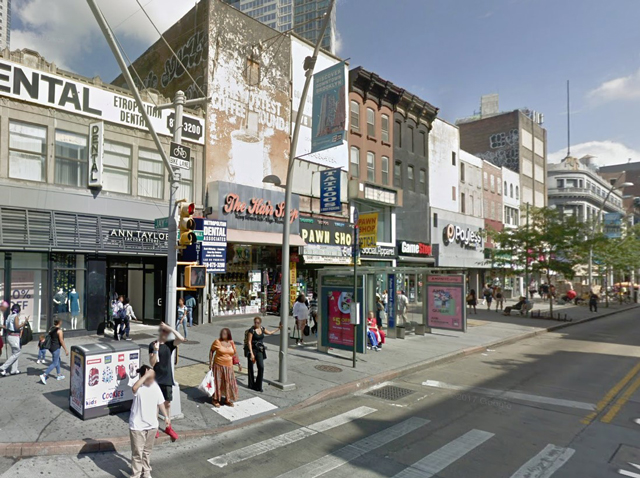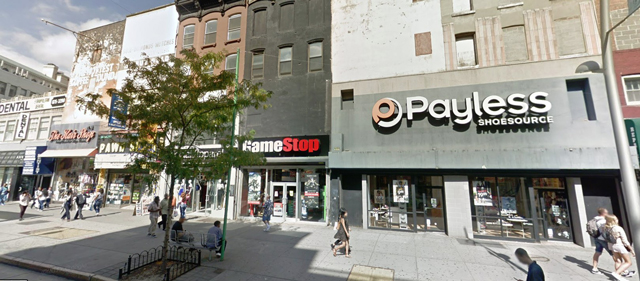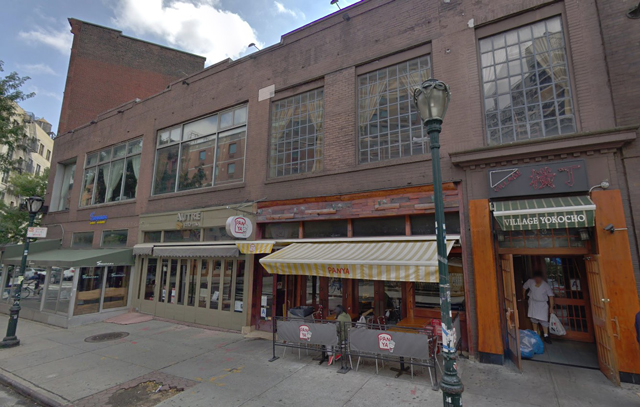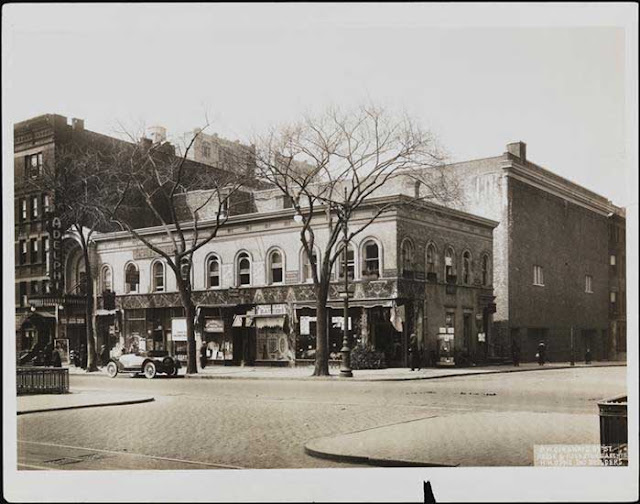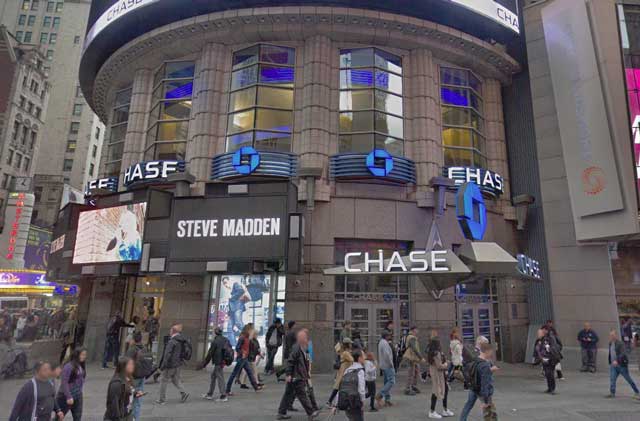Broadway at 89th Street, Upper West Side, Manhattan
 |
| The New Yorker Bookshop and New Yorker Theater in 1972 (Rafael Macia). |
Every block in New York City has its own story. The city has been built up for a long time and while much remains of the past, there is continual evolution which affects a lot of local residents. I stumbled upon the above photo from the
22 March 1971 New Yorker magazine and decided to find out what happened to this site. The photo accompanied a blurb requesting submissions from local artists (who had to live or work between West 72nd and 110th Streets between Central Park and the Hudson River) by the West 89th Street Block Association. The objective was to cover "the ugly north wall of the New Yorker Theater" with a mural, to be painted by a professional mural-painting company. So, with a few extraneous stops along the way, here is
a comparison of West 89th Street at Broadway on the Upper West Side from 1971 to 2018.
First, stepping a bit further back in time, this was the southwest corner of West 89th Street at Broadway around 1914. It appears that "ugly north walls" was a longstanding tradition on the block.
 |
| Broadway looking north from West 88th Street, showing the Broadway entrance for the New Yorker Theater in the distance, 1964. |
Taking a slightly different perspective on the area, above is a view north from West 88th Street in 1964. The marquee of the New Yorker Theater is visible.
 |
| West 89th Street at Broadway in 1973. |
Skipping back to the future, we can see the results of the mural competition in the above photo of West 89th Street from 1973. Isn't it nice to be able to do that? I'm no art critic, but my review of the completed mural is that ... it could have been a little more adventurous. I mean, I'm not the most daring fellow in the world, but even I sometimes put some pepper sauce on my chile. However, that whole "counterculture" thing was going on at the time and the leaders of the West 89th Street Block Association probably weren't the most radical people in the area. Anyway, it certainly makes a wall... a little less ugly. Also visible at the extreme right is 270 West 89th Street, the B'nai Jeshurun Community Center. That building dates from 1928. Just beyond (on this side of the New Yorker Theater) is one of those quintessentially New York brownstones that is impossibly thin but somehow always seem to survive wars, famine, and pestilence. There's a reason there are so many such "tiny" homes in Manhattan: the property tax laws back in the day were calculated by street frontage. Thus, the incentive was the build high and deep, but not wide. That building dates from 1899 and is a multi-family home.
 |
| The old New Yorker Theater. West side of Broadway 88th to 89th Streets, c.1977. Photo by Nicholas West. |
Above is yet another perspective on the southwest corner of West 88th Street at Broadway. Note the large marquee for the New Yorker Theater. The theater had its public entrance on Broadway but its backstage area mostly located on West 89th Street.
 |
| West 89th Street and Broadway, 1970s. |
Not visible in the above photos is the New Yorker Bookshop, which likely is the one thing many local residents will remember from the period. The New Yorker Bookshop was located just east of the New Yorker Theater on 89th Street, in the "L" formed by the theater. Now, which business was named "New Yorker" first, the theater or the bookstore, is a very good question, but I'm betting it was the theater. In any event, the New Yorker Bookshop was a community treasure. In the 1960s and 1970s, bookstores were often community centers where older folks could read up on Marx and the younger set could get the latest from Saul Alinsky. Incidentally, if you wanted to enter that mural competition mentioned above, you had to go to the New Yorker Bookshop for entry requirements and to make your submissions.
 |
| New Yorker Bookshop on the day that it closed, 19 May 1982. |
The New Yorker Bookshop, described in a New York Times article of 20 May 1982 as "something of an Upper West Side institution," closed up on 19 May 1982. Clearly, the closing was considered a major event if
the Times wrote an article about it. The closing of the New Yorker Bookshop, at least in retrospect, was the beginning of major changes for the block.
 |
| The current building on the southwest corner of 89th Street at Broadway (Google Street View, October 2017). |
Due to certain New York City tax incentives, a wild building spree took place in Manhattan in the mid-1980s. The law said something along the lines of, "you'll get a huge tax abatement if you complete your building by 1986." This led to construction up and down Manhattan Island. Among those new buildings was the completion of the Savannah apartment building on the corner of West 89th Street at Broadway in 1986. It is a handsome building even though IMHO its modern style doesn't really fit in with the more venerable buildings all around it. The Savannah took over the entirety of the New Yorker Theater and New Yorker Bookshop locations. The Savannah is 250 West 89th Street, the old street number of the New Yorker Bookshop.
 |
| 262 and 270 West 89th Street (Google Street View, October 2017). |
As for 262 and 270 West 89th Street, they're both still there. The brownstone at 262 last sold in 1976 for $110,000 and currently is valued at more than $5 million. The B'nai Jeshurun Community Center was renovated by preservation architect Giorgio Cavaglieri around 1999 to return it to its original 1928 appearance. Those old buildings need a lot of maintenance, and it looks like that was the case when the Google Street View van passed by in October 2017. Oh, and you may notice something else - the presence of trees again, just like in the 1914 photo. They make a big difference in softening a city landscape.
Anyway, getting into the minutiae of changes on one block in a big city may not seem that important. However, these changes really matter to the people who live there. Thanks for visiting this installment of our "the more things change, the more they stay the same" series. Please visit some of the other entries in the series!
2019






